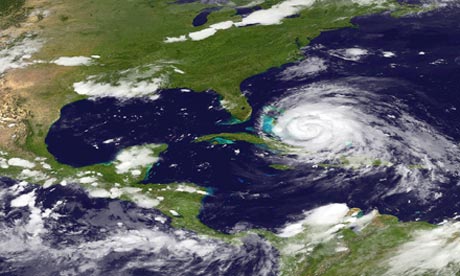Calamba, Misamis Occidental – GM Noel Dumalagan together with the MOELC-1 Board President Harley Paderangga will attend the Freedom from Debt Coalition (FDC) sponsored National Power Summit to be held on June 25-26 at the UP Dilliman Campus in Quezon City to tackle and participate issues concerning on Electric Power Reforms.
The said summit is an initiative of the Freedom from Debt Coalition on the 10th year anniversary of the EPIRA Law in cooperation with 1-CARE (1st Consumers Alliance for Rural Energy Partylist, Alliance of Mindanao Rural Electric Cooperatives (AMRECO), Institute for Climate and Sustainable Cities (iCSC),Foundation for Sustainable Society. Inc. (FSSI) and Fair Trade Alliance (FTA), whose theme of the power summit focuses on “Lessons Learned, Challenges and Prospects for the Philippine Power Industry.”
In his answer to questions from this newsweekly, GM Dumalagan said that MOELC-1 participation is to support the power summit and its goals to and objectives o craft a strong and unified positions on the government’s campaign to privatize remaining assets of NPC (Angat, Agus-Pulangi and Unified Leyte Geothermal Plant) and the rural electric cooperatives, and on the privatization of transmission.
Secondly, GM Dumalagan cited that the Power Summit will develop and promote Filipino Consumers welfare and interest in the power industry which is one of the missions of Misamis Occidental Electric Cooperative-1, especially on affordable power rates, reliable and secure power supply.
The National Power Summit objectives is also to craft strategic and programmed democratization of ownership and control particularly in generation and distribution sector and strategically programmed to switch towards renewable energy. The summit also targets the active role of the public sector in transmission and in crucial power generation.
Today, the power industry of the country is at a crossroads. With one of the highest industrial and residential power rates in Asia and in the whole world, the industry has made life harsher and harder to poor Filipinos. Economic growth is also slow as the high cost of power has made the nation’s industries uncompetitive in the international market, the consequences of which are being shouldered by the poor electric cooperatives member-consumers.
With the Electric Power Industry Reform Act of 2001 whose enactment is to serve an affordable and reliable supply of electricity, for a decade the Filipino people have not come close to savoring the taste and smell of it. Instead, power generation and transmission were concentrated in a state monopoly, rural Cooperatives tended to serve a more political than developmental functions, rent seeking, corruption and political patronage become its norm, suffered severe power shortage in the 1990’s and debts found by the World Bank unsatisfactory.
In its research FDC found out that the power crises in the 80’s up to the 90’s was exploited by the International Financial Institutions’ (IFIs) and the power-brokers in Malacañang to tap the private sector in addressing the crisis by liberalizing the entry of IPP’s or the Independent Power Producers for the power generation.
The supply shortage was address but the prohibitive cost of such cure was not told to the public until the mid-1990, NPC entered into contracts with the IPPs without consideration of actual and realistically forecasted supply and demand conditions and without prudent assessment of the risks and costs attached and created a new problem for the power sector.
From a situation of shortage the pendulum shifted to an over-contracted supply that consumers had to pay for whether or not they were actually used the contract capacity. With these anomalous details in the contracts with IPP’s sinks the National Power Corporation deeper into debts and the Filipino consumer suffers.
The FDC National Power Summit is expected also to be participated by the 119 Rural Cooperatives, some Legislators, and messages from Senators, Escudero, Honasan, Trillanes and Congressmen Bello, Bag-ao, Rivera and Cabaluna with Deputy Speaker of the House of the Representative Eric Tañada will speak before the participants from Consumers Groups like the Save Angat Dam, Coalition of Consumers for the Defense of the Privatization of the Tongonan Geothermal Plant in Leyte, PALAG Mindanao, FCD’s Local Chapters, Business Groups, Associations and Unions under REC’s, the Department of Energy (DOE), the Energy Regulation Commission(ERC), and Power Sector Assets and Liabilities Management Corporation (PSALM).
The Freedom from Debt Coalition (FDC) farther cited that notwithstanding all the unmet objectives of EPIRA, the IFIO’s, government and power-brokers/marketers contend that while reforms in the power industry may have suffered setbacks, all these are but a work in progress as actual privatization of the assets of NPC begun only five years ago. Yet the with privatization continuing at a more harried pace today, the future of the industry and the dream of consumers’ to have universal access to affordable, sustainable and reliable power, remain bleak. As far as the ordinary consumers and the poor are concerned, the lights are still off.
Mindanaoan is a full time media practetioner. A former Broadcast Journalist of RMN, A Cultural Worker, and Political Media Consultant. The Publisher is also the VP for External Affairs of the Mangagawang Media ng Mindanaw a DOLE Registered Media Organization with Registry Certificate No MO-RW-005-352-2009.


